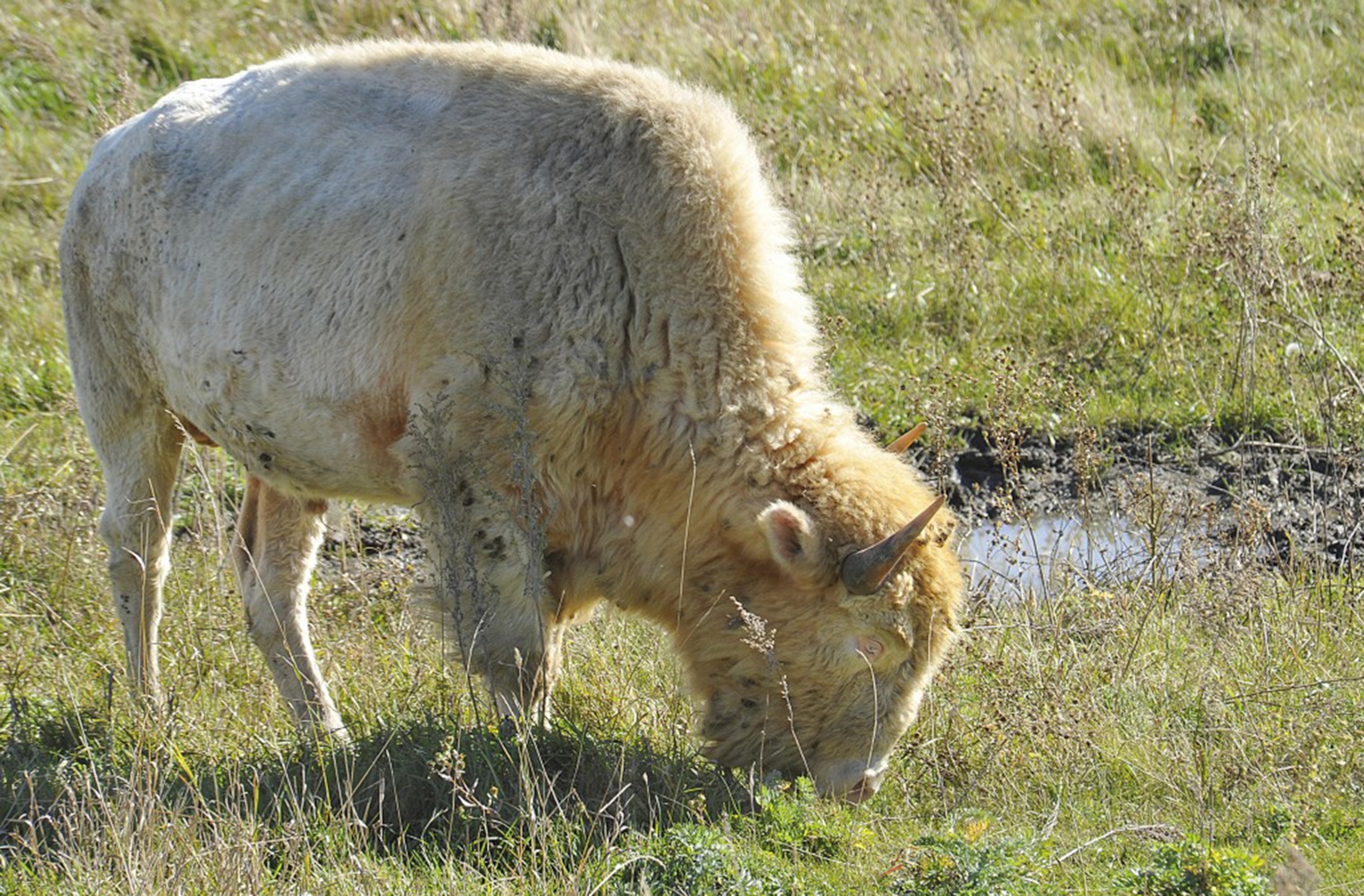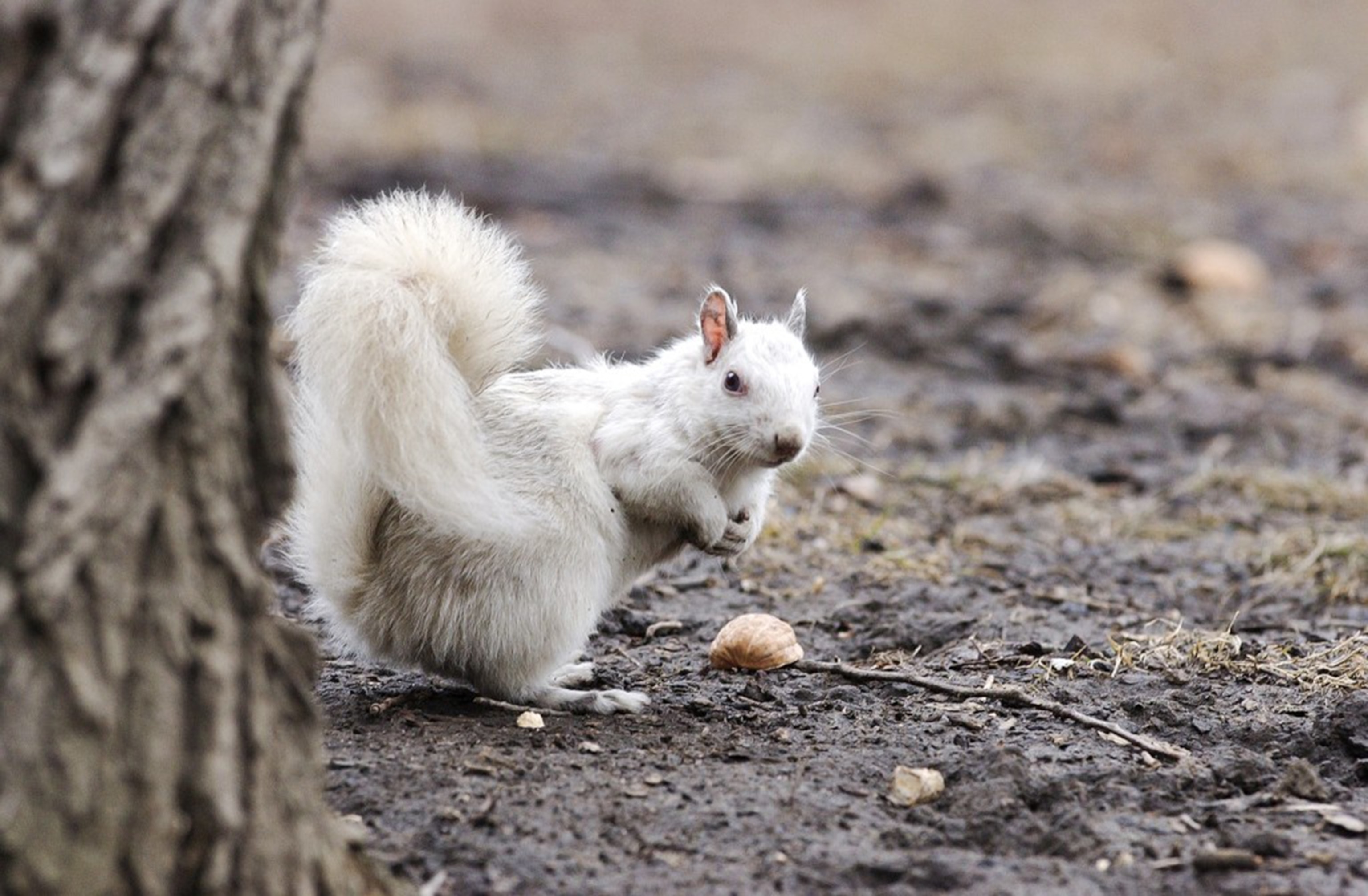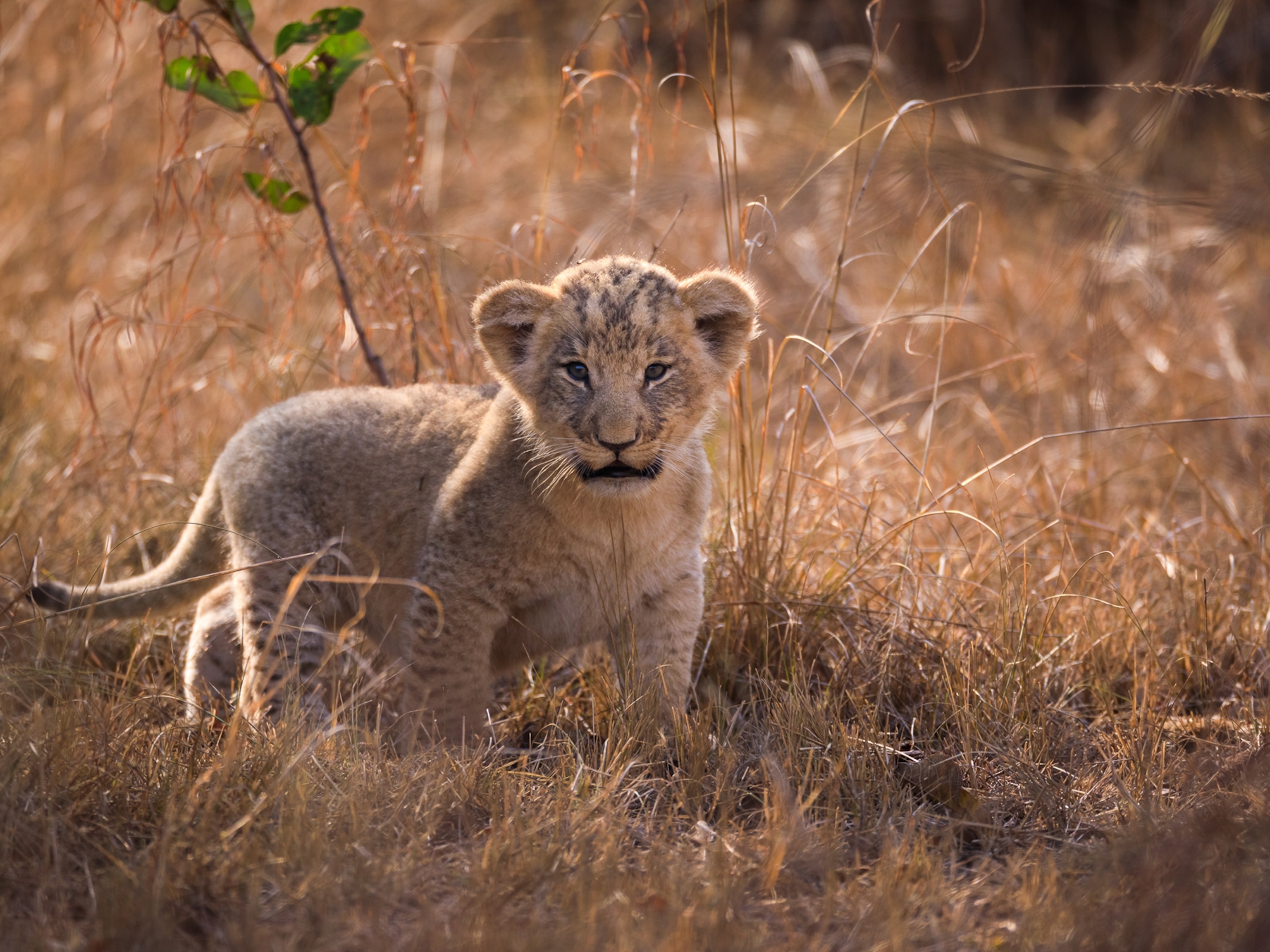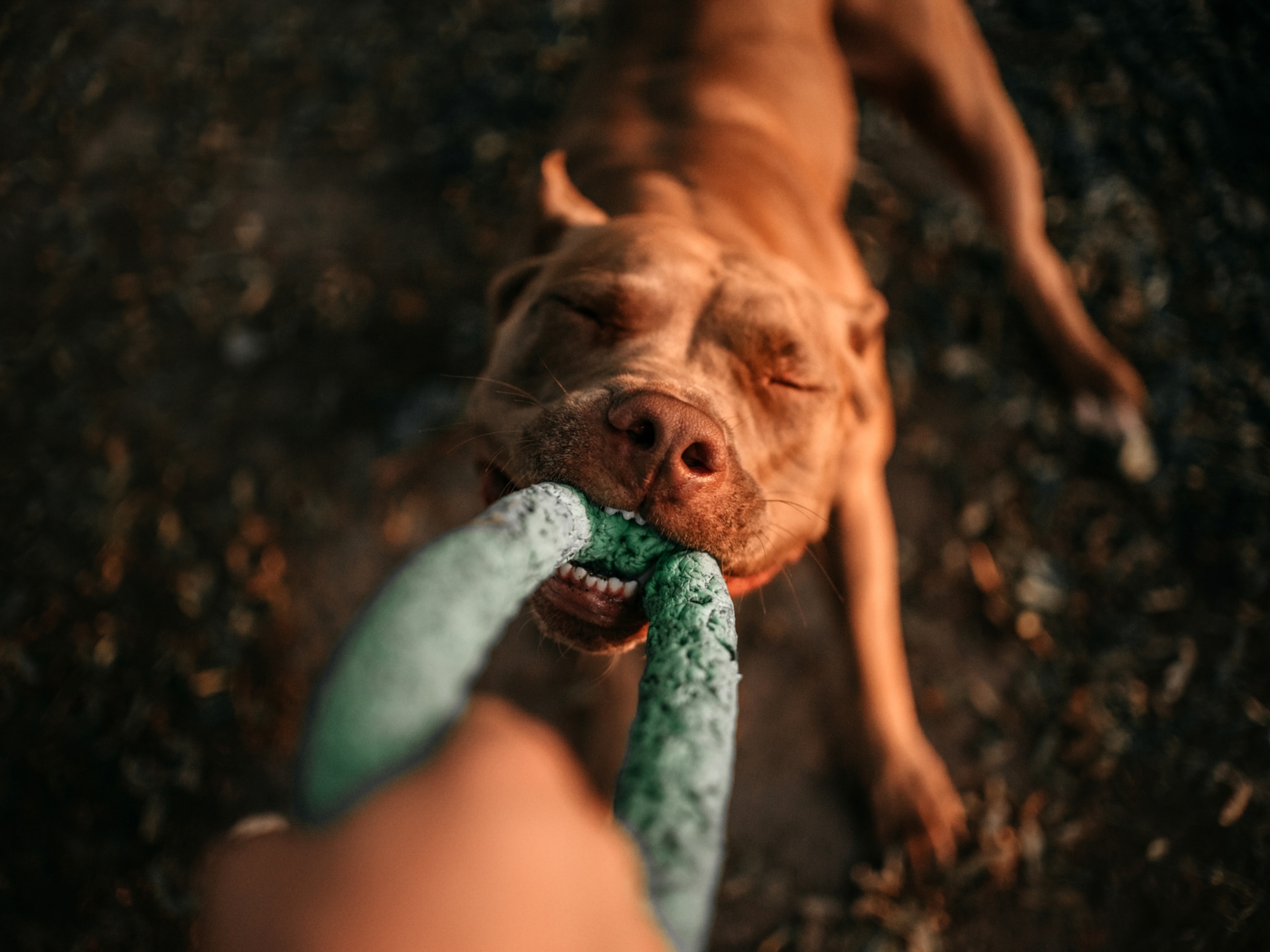
Rare White Lion Cub Seen in South Africa
An expert weighs in to clear up misconceptions about white lions.
On March 5, wildlife guides at the Ngala Private Game Reserve in South Africa stumbled upon an unusual sight—a white lion cub in the wild.
According to Lyle Bruce McCabe, a field guide at the reserve, he was watching a male lion sleeping in the Timbavati river bed when he heard the call of a young cub squeak out of a thicket nearby.
“I moved closer to the bank to investigate, and we saw the small head of a lion cub roll out from its mother’s teat,” says McCabe, who has been guiding at Ngala for two years.
The cub is the first wild white lion that McCabe or his colleague, animal tracker Fanny Mathonsi, have ever seen. And Mathonsi has been working in this area for 26 years.
While not completely unheard of, white lion cubs are uncommon because they can be born only if both parents possess a recessive mutation in a gene that makes colored pigments called melanins. Technically, these animals are considered leucistic, not albino, because they have some pigment in certain areas, such as the eyes. (See pictures of rare white giraffes and other animals.)
“They are exceptionally rare to see fully grown in the wild; however, we think more are born that don’t reach adulthood,” says McCabe.
Hard Road Ahead
White lions might also be rare in the wild because they’re less likely to survive, but it’s surprisingly unclear how well the animals fare.
“As with all young animals born in the wild, babies are especially vulnerable to predation,” says McCabe.
What’s more, only 50 percent of lion cubs—even normally colored cubs—survive their first year. (See “First-Ever Photos Show Wild Lion Nursing Leopard Cub.”)
It would stand to reason that being white is not ideal for a lion, says Paul Funston, the senior lion program director for Panthera, the global wild cat conservation organization.
A lion’s usual tawny color helps it blend into tall grasses and other vegetation. The animals also hunt at night, when a white lion would stand out even more.
“I don’t think it’s an accident that lions are the color they are,” says Funston.
However, some wild white lions have survived to adulthood. This might mean that these drawbacks aren’t as important as we might think, or perhaps that white lions are able to overcome their handicap as a result of the communal feeding and protection that comes with life in a pride.
“As a scientist, I can’t say that there’s categorical evidence either way,” says Funston.
The Problem with White Lions
In the wild, a white lion is a wonder. But in captivity, it may be a tragedy.
There is evidence that when breeders select for white lions—a practice that almost always necessitates inbreeding—the animals will eventually start to show defects.
One study found that out of 19 white lion cubs bred at a zoological garden in Italy, four were stillborn and another 13 didn’t survive the first month. Six of the lions also showed skull abnormalities. Only one of the cubs lived for an extended period of time, and it had physical and neurological disabilities.
For this and other reasons, the Association of Zoos and Aquariums forbids member institutions from breeding for white lions and other genetic abnormalities.
It’s also important for people to realize that white lions are not their own species or subspecies, Funston says, nor are they classified as critically endangered, as some organizations have a habit of reporting.
“There is a lot of misinformation that’s been fed into society about white lions and what white lions are,” says Funston.
“And it’s all absolute codswallop.”










